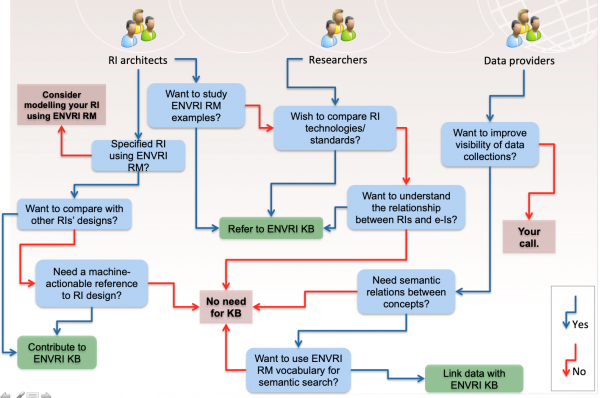A3. ENVRI Knowledge Base
The attributes marked with a * are confidential and should not be disclosed outside the service provider.
| Service overview | |||||||||||||||||||||
| Service name | ENVRI Knowledge Base | ||||||||||||||||||||
| Service area | |||||||||||||||||||||
| Service phase | Beta | ||||||||||||||||||||
| Service description | |||||||||||||||||||||
| Customer group |
| ||||||||||||||||||||
| User group | |||||||||||||||||||||
| Value | |||||||||||||||||||||
| Tagline | |||||||||||||||||||||
| Features |
| ||||||||||||||||||||
| Service options |
| ||||||||||||||||||||
| Access policies | |||||||||||||||||||||
| Service management information | |||||||||||||||||||||
| Service owner * | University of Amsterdam | ||||||||||||||||||||
| Contact (internal) * | Zhiming Zhao (z.zhao@uva.nl) | ||||||||||||||||||||
| Contact (public) | |||||||||||||||||||||
| Request workflow * | 
| ||||||||||||||||||||
| Service request list | |||||||||||||||||||||
| Terms of use | |||||||||||||||||||||
| SLA(s) | |||||||||||||||||||||
| Other agreements | |||||||||||||||||||||
| Support unit |
| ||||||||||||||||||||
| User manual | online accessible documentation via http://oil-e.vlan400.uvalight.net/ | ||||||||||||||||||||
| Service architecture | |||||||||||||||||||||
| Service components | TRL 6, live demonstrator
| ||||||||||||||||||||
| Finances & resources | |||||||||||||||||||||
| Payment model(s) | free | ||||||||||||||||||||
| Pricing | |||||||||||||||||||||
| Cost * | |||||||||||||||||||||
| Revenue stream(s) * |
The ENVRI Knowledge Base should be maintained as part of the ENVRI community portal. | ||||||||||||||||||||
| Action required |
[1] Technology Readiness Levels (TRL) are a method of estimating technology maturity of components during the acquisition process. For non-technical components, you can specify “n/a”. For technical components, you can select them based on the following definition from the EC:
- TRL 1 – basic principles observed
- TRL 2 – technology concept formulated
- TRL 3 – experimental proof of concept
- TRL 4 – technology validated in lab
- TRL 5 – technology validated in relevant environment (industrially relevant environment in the case of key enabling technologies)
- TRL 6 – technology demonstrated in relevant environment (industrially relevant environment in the case of key enabling technologies)
- TRL 7 – system prototype demonstration in operational environment
- TRL 8 – system complete and qualified
- TRL 9 – actual system proven in operational environment (competitive manufacturing in the case of key enabling technologies)